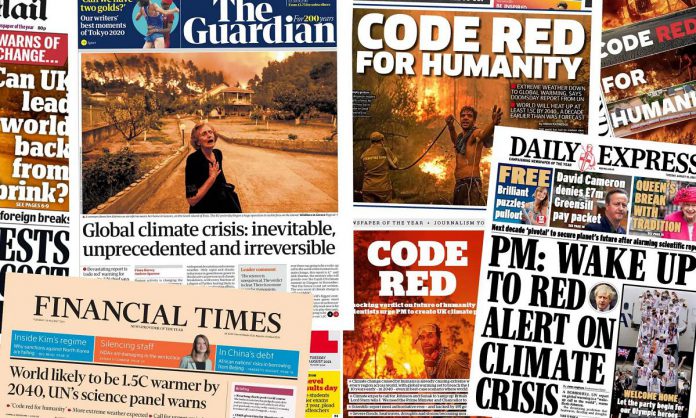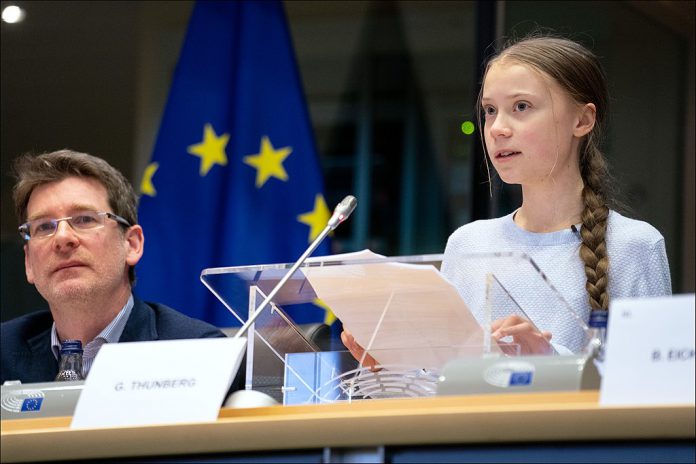
This week (October 3 to 9) is Mental Illness Awareness Week and this Sunday (October 10) is World Mental Health Day. This week — and every week — is an opportunity to recognize the urgent need to scale up quality mental health supports and services at all levels.
What does mental health have to do with climate change?
Climate change is creating more frequent and severe weather events that destroy homes and entire communities. Rampant consumerism and unsustainable development are also destroying and polluting ecosystems, causing the largest mass extinction event in the history of the planet: more life is being lost now than ever before.
News coverage tends to focus mostly on this doom and gloom. It makes sense that a never-before-seen degree of loss, trauma, and change would impact mental health.
I want to share just two ‘tricky pairs’ of issues that I keep in mind when I try to balance mental health and climate change: one is anxiety and inaction, and the other is invisibility and inequity.
Tricky pair #1: anxiety and inaction
We know danger is coming because of climate change. In Peterborough and the Kawarthas, we may have been spared from the heat domes and flooding seen elsewhere this year, but local patterns in temperature and precipitation have changed dramatically.
I recommend you read local naturalist Drew Monkman’s columns to learn more.
Anticipating future devastation causes anxiety.
According to a recent article by Harriet Engle and Michael Mikulewicz published in The Lancet, this “eco-anxiety is characterized by severe and debilitating worry about climate and environmental risks and can elicit dramatic reactions, such as loss of appetite, sleeplessness, and panic attacks.”

Eco-anxiety sounds bad, but there’s more to it than that.
“Far from being a contemporary mental illness,” Engle and Mikulewicz explain, “there is evidence to suggest that eco-anxiety and habitual ecological worrying are actually adaptive responses to the changing climate.”
Pain reflexes jerk my hand away when I touch a burning hot surface. Likewise, “anxiety is an evolutionary alarm mechanism that functions to keep us safe.”
The challenge is figuring out how much eco-anxiety is enough to drive effective climate action, and how much is too much before it compromises our mental health.
“Environmentalists don’t do hope very well,” observes Graham Saul, executive director of Nature Canada, in a 2018 interview with CBC. “If we are honest with ourselves, we peddle mainly in fear.”
The same climate change facts that inspire fear can also compel action and hope.
“As a scientist, this is scary,” Katharine Heyhoe shared in a recent interview with Matt Galloway on CBC’s The Current. “But the science also offers this hope that it is not too late to avoid the worst of the impacts.”

“I study the difference that our choices make in the future, and I can tell you, without a shadow of a doubt, that our future is in our hands,” Heyhoe continues. “Every choice matters, every year matters, every bit of warming matters, and every action matters. But if we don’t act, that’s a choice in and of itself, and it will become a self-fulfilling prophecy.”
“The world has changed before, and it hasn’t changed because people felt guilty,” Heyhoe affirms. “It’s changed because people recognized that there was something better.”
There’s something better for Peterborough, for Canada, and for the world. A community focused on empowering effective climate action is one of the most effective supports for hope.
Personally, I also find it helpful to learn how to identify and overcome the psychological barriers known as the “Dragons of Inaction” (to learn more, read our column from February 27, 2020).
Tricky pair #2: invisibility and inequity
One of the biggest barriers to climate action is that the problem is basically invisible to our eyes. If greenhouse gas emissions were always coloured with Pantone 448C (“opaque couché” — a.k.a. the ugliest colour the world), we’d be far more inclined toward climate action.
Likewise, mental health disorders are often neglected because they are less visible than physical health disorders. As Ingle and Mikulewicz point out, this is particularly true “in developing countries where mental health sits relatively low on the agendas of governments, aid agencies, and NGOs.”
We need to build awareness for these mental health issues in our fight for equity and climate action.

“This awareness will benefit those most vulnerable to and least responsible for causing the global climate emergency,” suggest Ingle and Mikulewicz.
In Rigolet, Northern Labrador, the average temperature is rising twice as fast as the rest of the world. Ice has already been forming a month later and melting a month sooner, resulting in loss of traditional Inuit hunting practices, loss of food, loss of an entire way of life and cultural identity.
As part of a study by the Memorial University of Newfoundland, residents of Rigolet were asked, “how are the changes in weather and ice making you feel?”
“People would talk about a whole host of emotional responses: fear, anxiety, sadness, anger, frustration, a lot of helplessness and hopelessness,” shares Professor Ashley Cunsolo in a 2017 story on CBC’s The National.
Cunsolo’s team observed the deep ecological grief and collective anxiety that the residents of Rigolet feel because of climate change.
Historically, Inuit, First Nations, and Métis populations across Canada experience severe mental health disparities compared to the non-Indigenous Canadian population. This is an ongoing legacy of colonization. Without effective action, climate change will only exacerbate these disparities.
While we fight those Dragons of Inaction in our personal lives, we also need to keep perspective on inequity. Many residents of the Peterborough area may not know what steps they can take to support both equity and climate action.
VIDEO: “Climate change affecting mental health in northern Labrador”
A good place to start is the recent Sustainable Development Goals project co-ordinated by the Kawartha World Issues Centre and GreenUP. This project provides key community resources, organizations, and tools for addressing these inequalities and disparities locally as we take climate action.
GreenUP’s NeighbourPLAN Visions and Sustainable Urban Neighbourhood Action Plans also include actions you and neighbours may be able to take to create more sustainable and equitable communities.
Those are the tricky pairs I’m wrestling with this World Mental Health Day. By learning more and discussing with friends and family, you can build awareness for the importance of both mental health and climate action.


























